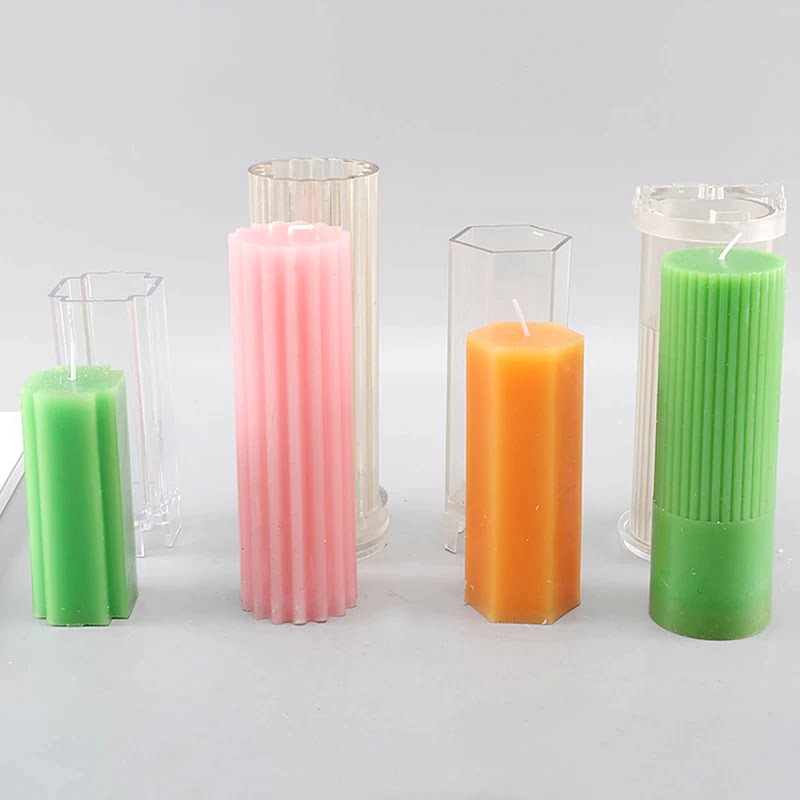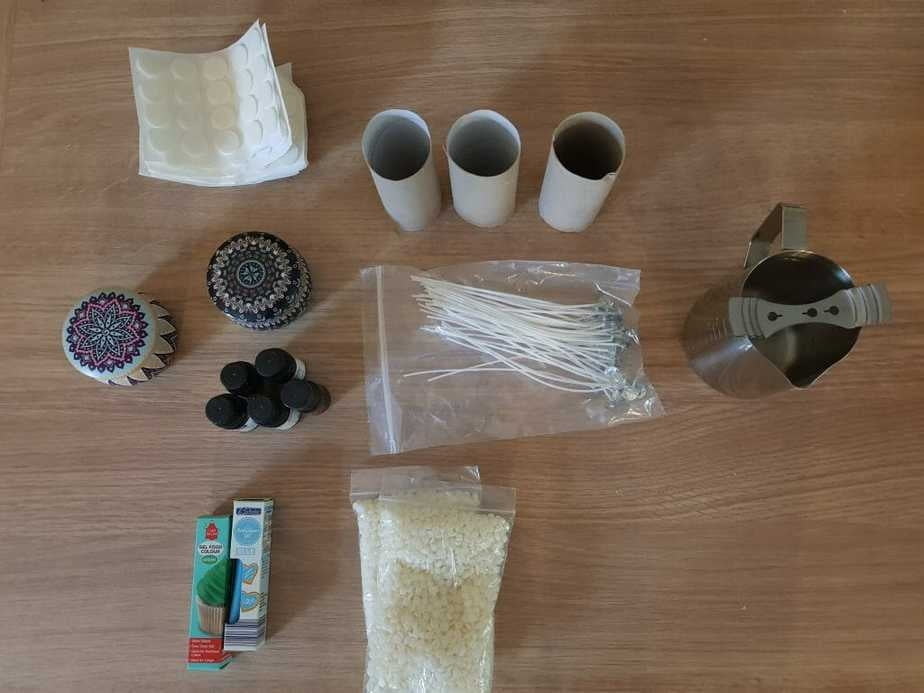Beeswax is a natural substance produced by honeybees and has been used for centuries in various applications, including candle making. If you’re wondering, “do you need to filter beeswax for candle making,” the answer is yes. This article will explore the process of collecting and extracting beeswax, as well as the importance of filtering beeswax in candle making.
Beeswax is derived from the honeycomb of bees and is known for its clean-burning properties and pleasant aroma. It has become a popular choice for candle making due to its natural composition and sustainability. However, before beeswax can be used in candles, it needs to undergo a filtering process to remove impurities and debris collected during extraction.
The filtering process plays a crucial role in ensuring the quality of beeswax used for candle making. Not only does it improve the appearance and texture of the candles, but it also enhances their burn time and fragrance diffusion. In the following sections, we will delve into why filtering beeswax is essential for high-quality candle making, different methods of filtering, common mistakes to avoid, and tips for choosing the right filtering equipment.
The Process of Beeswax Collection and Extraction
Beeswax, a natural substance secreted by honeybees, is a valuable ingredient in the production of candles due to its clean-burning properties and pleasant aroma. The process of collecting and extracting beeswax is crucial in ensuring the quality of the final product. Once the beeswax is harvested from the beehive, it must undergo a thorough filtering process to remove impurities and debris before it can be used for candle making.
The collection and extraction of beeswax begins by carefully removing the wax combs from the beehive. These combs are then heated in a water bath or solar wax melter to melt the wax, allowing it to separate from any residual honey or bee remnants. Once melted, the beeswax is ready for the filtering process, which is an essential step in producing high-quality candles.
During the filtering process, it’s important to remove any remaining impurities such as pollen particles, propolis, and other debris that may have been collected during the beeswax extraction. This step ensures that the final product is pure and free from any contaminants that could affect the burning quality of the candles. In addition to improving the overall appearance and smell of the candles, filtered beeswax also prolongs their burn time and reduces soot production.
Methods for filtering beeswax include using cheesecloth or fine mesh filters to strain out particles, as well as utilizing specialized equipment such as filter presses or straining bags. Regardless of the method chosen, proper filtration is essential for creating high-quality candles that burn cleanly and emit a pleasant fragrance. Taking care to choose appropriate filtering equipment will ensure that your beeswax is effectively purified for use in candle making.
What Is Beeswax Filtering and Why It’s Important in Candle Making
Beeswax is a natural substance produced by honeybees and is widely used in candle making due to its clean-burning and long-lasting properties. However, before it can be used in candle making, the beeswax needs to undergo a filtering process to remove impurities and other debris.
What Is Beeswax Filtering?
Beeswax filtering is the process of purifying raw beeswax to remove any debris, pollen, or other impurities. This is important in candle making as it ensures that the final product is clean and free from any particles that could affect the quality of the candle.
Why It’s Important in Candle Making
Filtering beeswax is crucial in candle making because it helps to improve the overall quality of the candles. Impure beeswax can contain debris, pollen, or even small particles of bee wings and legs that can affect the burning characteristics of the candles. Additionally, filtered beeswax results in candles with a smoother texture and more consistent color, making them more visually appealing to consumers.
Different Methods of Filtering Beeswax
When it comes to filtering beeswax for candle making, there are several methods that can be used to achieve the desired results. Whether you are a beginner or an experienced candle maker, choosing the right filtering method is crucial to producing high-quality candles. Here are some different methods of filtering beeswax:
1. Gravity Filtration: This is one of the most common methods of filtering beeswax and involves simply pouring the melted wax through a filter, such as cheesecloth or a fine mesh sieve. The impurities in the wax are left behind on the filter, resulting in clean and purified beeswax.
2. Double Boiler Method: In this method, the beeswax is melted in a double boiler and then poured through a filter into another container. This helps to separate any debris or leftover honey from the wax, resulting in a purer final product.
3. Solar Wax Melter: Using a solar wax melter is another effective way to filter beeswax. The heat from the sun melts the wax, allowing it to flow through a filter and into a collection container, leaving behind any impurities.
These are just a few examples of methods that can be used to filter beeswax for candle making. Each method has its own advantages and may be more suitable depending on your specific needs and resources. No matter which method you choose, the important thing is to ensure that the beeswax is thoroughly filtered to produce high-quality candles.
The Benefits of Filtering Beeswax for Candle Making
Filtering beeswax for candle making offers numerous benefits that contribute to the overall quality of the finished product. By removing impurities and debris from the beeswax, filtering helps ensure that your candles burn cleaner and longer. Additionally, filtered beeswax results in a more consistent and even appearance, making it ideal for crafting professional-looking candles.
Improved Aesthetic Appeal
One of the primary benefits of filtering beeswax for candle making is the enhanced aesthetic appeal it provides. Filtering removes any specks of dirt, pollen, or other unwanted particles from the beeswax, resulting in a smoother appearance when the wax is used to create candles. This not only improves the visual appeal of the finished product but also contributes to a more professional and polished look overall.
Enhanced Performance
Filtered beeswax also offers improved performance when used in candle making. The removal of impurities through filtering can prevent clogged wicks and uneven burning, ultimately leading to longer-lasting candles with a more consistent flame. The absence of debris in filtered beeswax ensures that the wax burns evenly and cleanly, providing a better overall experience for those enjoying your handmade candles.
Pure Scent Preservation
When beeswax is filtered before being used in candle making, any traces of pollen or other natural elements are effectively removed. This helps preserve the pure scent of the beeswax without any interference from external particles. As a result, filtered beeswax allows for a more authentic and natural fragrance experience when scented candles are created using this high-quality ingredient.
Common Mistakes to Avoid When Filtering Beeswax
When it comes to filtering beeswax for candle making, there are certain common mistakes that should be avoided in order to ensure the best quality product. One of the most common mistakes is not properly preparing the filtering equipment.
Before using any filtering equipment, it is important to make sure that it is clean and free of any residue from previous uses. Failure to do so can result in impurities being introduced into the beeswax during the filtering process, compromising its quality.
Another common mistake when filtering beeswax is using the wrong type of filter. It is essential to use a filter with pores that are the appropriate size for removing any impurities from the beeswax without losing its natural properties. Using a filter with pores that are too large can result in impurities passing through, while using a filter with pores that are too small may unnecessarily remove beneficial compounds from the beeswax.
In addition, another mistake to avoid is rushing the filtering process. Filtering beeswax takes time and patience, and attempting to rush through it can result in an inadequate filtration and ultimately affect the quality of your candles. Taking your time during this crucial step will ensure that you end up with clean, high-quality beeswax that is perfect for candle making.
| Common Mistakes When Filtering Beeswax | How to Avoid Them |
|---|---|
| Improperly preparing filtering equipment | Ensure equipment is clean and free of residue before use |
| Using the wrong type of filter | Use a filter with appropriately sized pores for effective filtration |
| Rushing the filtering process | Take your time during filtration for best results |
Tips for Choosing the Right Filtering Equipment for Beeswax
Filtering beeswax is an important step in the candle making process, as it helps to remove impurities and debris from the wax. This results in a smoother, cleaner burn for the candles. When it comes to choosing the right filtering equipment for beeswax, there are a few key factors to consider.
First and foremost, it’s important to consider the volume of beeswax you will be filtering. If you are a small-scale candle maker, a simple filtering setup using cheesecloth or a fine mesh strainer may be sufficient. However, if you are working on a larger scale, investing in commercial-grade filtering equipment such as a stainless steel wax melter with built-in filtration capabilities may be more appropriate.
Another important consideration when choosing filtering equipment for beeswax is the type of impurities present in the wax. For example, if your beeswax contains a lot of debris and larger particles, you will need a filtering setup with a coarser filter to effectively remove these impurities. On the other hand, if your wax is relatively clean and free of large particles, a finer filter may be more appropriate.
Lastly, consider the efficiency and ease of use of the filtering equipment. Look for equipment that is easy to clean and maintain, as well as one that fits within your budget constraints. Taking all of these factors into consideration will help you choose the right filtering equipment for your specific beeswax processing needs.
| Factors to Consider | Considerations |
|---|---|
| Volume of Beeswax | Small-scale vs Large-scale production |
| Type of Impurities | Debris and particle size |
| Efficiency and Ease of Use | Cleaning and maintenance; Budget constraints |
Conclusion
In conclusion, the process of filtering beeswax is an essential step in creating high-quality candles. As discussed, filtering beeswax helps to remove impurities and debris, resulting in a cleaner and more refined final product. This not only improves the aesthetic appeal of the candles but also enhances their burning qualities.
Furthermore, filtered beeswax is less likely to clog wicks or create soot when burned, making it a preferred choice for candle making. Whether using basic filtration methods or advanced equipment, ensuring that the beeswax is properly filtered can make a significant difference in the overall quality of the candles produced.
In closing, while it may require extra time and effort, filtering beeswax is ultimately worth it for those seeking to create beautiful, long-lasting candles. By following the tips provided and avoiding common mistakes, candle makers can achieve excellent results and produce candles that are both visually appealing and functionally superior. So, when considering whether or not to filter beeswax for candle making, the answer is clear: yes, it is indeed important for achieving high-quality results.
Frequently Asked Questions
Can You Use Unfiltered Beeswax to Make Candles?
Yes, unfiltered beeswax can be used to make candles. However, unfiltered beeswax may contain impurities like bee parts, pollen, and other debris that can affect the quality of the candle. Some people prefer the natural look and aroma of unfiltered beeswax candles, while others opt for the cleaner appearance of filtered beeswax.
How Do You Purify Beeswax for Candles?
Beeswax can be purified for candle-making by melting it and then straining it through a fine mesh or cheesecloth to remove any impurities. This process helps to create a cleaner and more uniform appearance in the final candle. Purifying beeswax also helps to improve its burning characteristics and reduces the likelihood of soot and smoke during burning.
What Is the Difference Between Filtered and Unfiltered Beeswax?
The main difference between filtered and unfiltered beeswax is the presence of impurities. Filtered beeswax has been processed to remove any debris, pollen, or other foreign particles, resulting in a cleaner and more consistent product.
Unfiltered beeswax retains its natural impurities, which may affect its appearance and burning characteristics but also give it a more rustic and natural appeal. Ultimately, the choice between filtered and unfiltered beeswax depends on personal preference and intended use for candle-making.

Welcome to my candle making blog! In this blog, I will be sharing my tips and tricks for making candles. I will also be sharing some of my favorite recipes.





